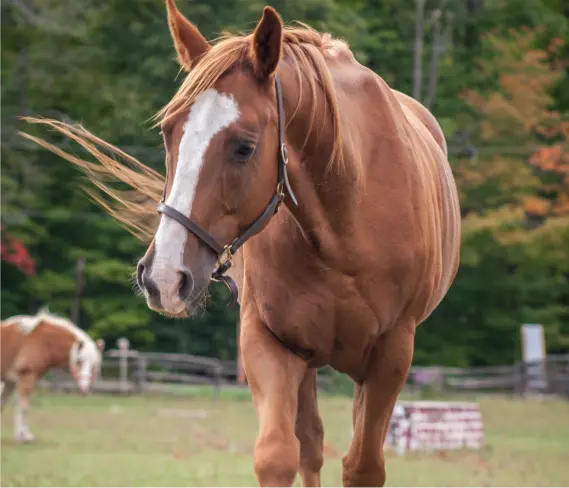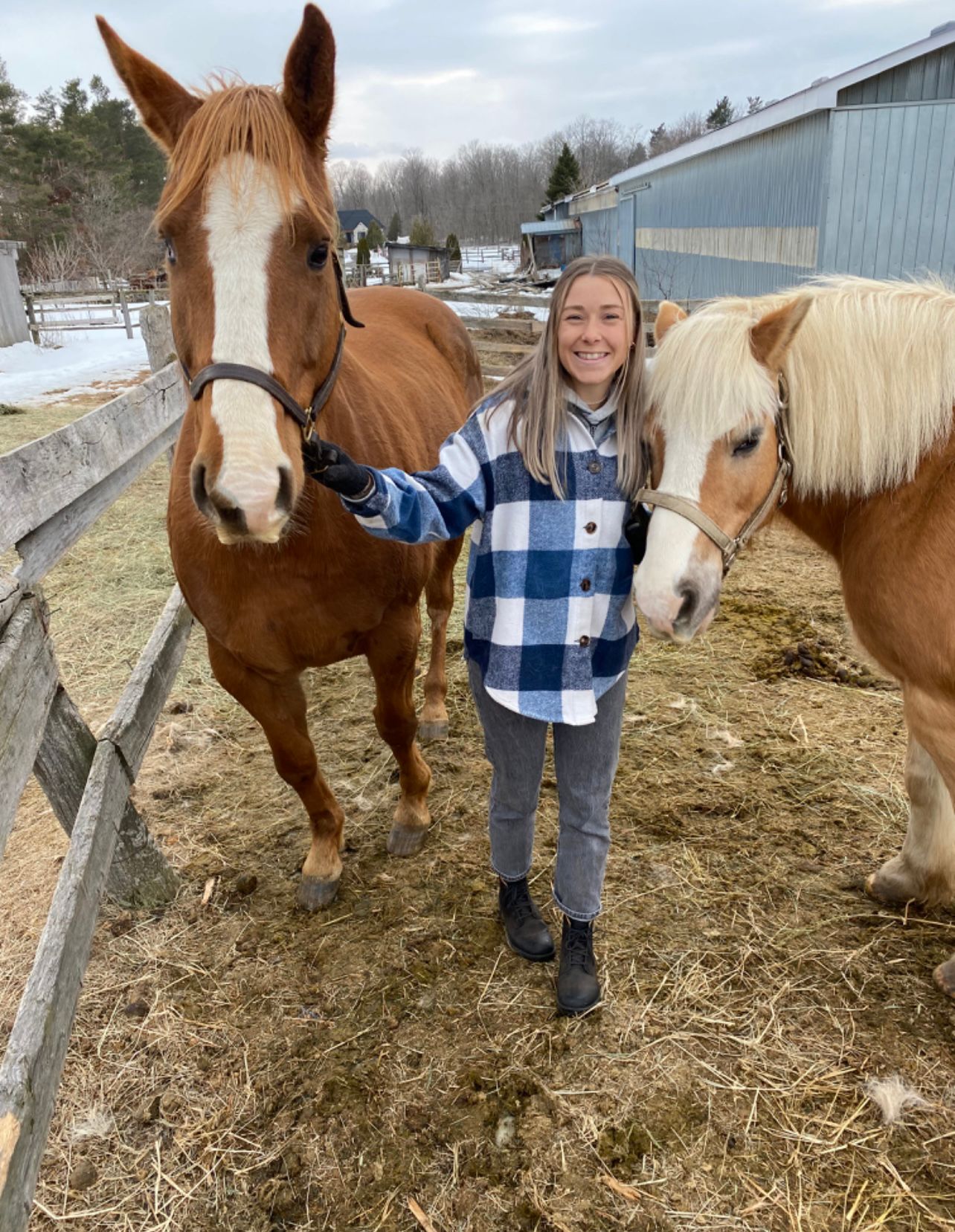Equine assisted therapy vs. equine assisted learning, this is a question that we often get from clients and practitioners. Are you looking for services for yourself, or a loved one? Or maybe you are hoping to start a career in this exciting field. Here, we break down everything you need to know about the differences between Equine Assisted Therapy (EAT / EAP) and Equine Assisted Learning (EAL).

Understanding the Difference Between Equine Assisted Therapy and Equine Assisted Learning
In recent years, the integration of animals into various forms of therapy and learning has gained significant attention and traction. Among these approaches, equine-assisted interventions have emerged as powerful tools for promoting emotional, psychological, and educational growth. Two main branches within this domain are equine-assisted therapy (EAT) and equine-assisted learning (EAL). While they both involve horses and share certain similarities, they differ in their objectives, methods, and intended outcomes. In this comprehensive blog post, we will delve into the fundamental distinctions between equine assisted therapy vs. equine assisted learning.
Equine Assisted Therapy (EAT / EAP)

Equine-assisted therapy (EAT), also known as equine therapy, horse therapy, or equine assisted psychotherapy (EAP), is a structured intervention involving horses to address various mental health and emotional challenges in individuals. The primary goal of EAT is to help individuals improve their emotional well-being, develop coping mechanisms, enhance self-awareness, and manage symptoms of mental health concerns and disorders. Equine-assisted therapy is always facilitated by mental health professionals such as licensed therapists, counselors, or social workers who have undergone specialized training in both mental health therapy and equine-assisted therapy.
Objectives of EAT
Equine-assisted therapy (EAT) encompasses a range of objectives aimed at promoting mental and emotional well-being in individuals. The key objectives include:
- Emotional Regulation
EAT aims to assist individuals in regulating their emotions and managing stress, anxiety, depression, or trauma-related symptoms through interactions with horses. The calming presence of horses and the activities involved can have a soothing effect on individuals, promoting emotional balance.
- Enhanced Communication Skills
Interacting with horses provides a unique opportunity to improve communication and social skills. Horses, being highly sensitive to non-verbal cues, encourage individuals to develop clearer communication, fostering better relationships and interactions not only with the horse but also with others.
- Self-Awareness and Insight
Through interactions with horses and guided therapeutic exercises, individuals can gain deeper insights into their thoughts, emotions, and behavioral patterns. Horses can act as mirrors, reflecting an individual’s emotional state and behaviors, thus facilitating increased self-awareness.
- Building Trust and Empathy
Establishing a connection and trust with a horse is fundamental in EAT. This experience translates into improved trust and empathy in human relationships. Learning to connect with and understand a horse’s feelings and needs promotes the development of empathy.
- Developing Coping Strategies
EAT assists individuals in developing healthier coping strategies and resilience to deal with life’s challenges effectively. The skills learned from interacting with horses can be transferred to real-life situations, empowering individuals to navigate stressors and adversities.
Methods of EAT
EAT sessions involve a variety of structured activities designed to achieve therapeutic objectives. These activities can include:
1. Grooming and Care
Individuals are involved in grooming, feeding, and caring for the horses. This fosters a sense of responsibility and nurtures a bond between the individual and the horse, promoting emotional well-being.
2. Leading and Guiding
Learning to lead and guide a horse during ground-based activities promotes confidence and assertiveness. The individual develops a sense of control and mastery over their actions, which can translate into improved self-esteem.
3. Riding Exercises
Riding exercises, under the guidance of a trained therapist, can help individuals overcome fear, improve balance, and enhance focus and concentration. It can be particularly beneficial for individuals dealing with anxiety or trauma.
4. Reflective Processing
After engaging in activities with the horse, a crucial aspect of EAT involves reflective processing with the therapist. The therapist helps the individual process their experiences, emotions, and behaviors during the session, relating them to real-life situations.
Research and Effectiveness of EAT
Research has consistently demonstrated the effectiveness of equine-assisted therapy in improving mental health outcomes. For instance, a study by Selby et al. (2015) showed significant reductions in symptoms of anxiety and depression in participants after engaging in equine-assisted therapy. Another study by Johnson et al. (2018) highlighted the positive impact of EAT in improving self-esteem and emotional regulation in adolescents.
Studies have also pointed towards the unique and impactful nature of the human-horse bond in therapy. The non-judgmental and non-verbal interaction with horses can create a safe and accepting environment, facilitating the therapeutic process.
Equine Assisted Learning (EAL)
Equine-assisted learning (EAL) is an educational approach that involves incorporating horses into learning experiences to achieve specific educational goals. Unlike EAT, the primary focus of EAL is on educational and personal development objectives rather than addressing mental health challenges. Equine-assisted learning is usually facilitated by equine professionals without mental health training, but therapists may use these methods in their therapeutic interventions as well.
Objectives of EAL
Equine-assisted learning (EAL) encompasses a diverse set of objectives aimed at enhancing personal and educational growth. The primary objectives include:
1. Skill Development
EAL aims to enhance various life skills, such as leadership, teamwork, problem-solving, communication, and decision-making, through interactions with horses. These skills are essential for personal and professional success.
2. Personal Growth and Development
Participants in EAL programs often experience personal growth by building self-confidence, self-esteem, and a sense of responsibility. Working with horses allows individuals to overcome challenges, fostering a sense of achievement and personal development.
3. Learning Responsibility and Accountability
Interacting with and caring for horses teaches individuals the importance of responsibility and accountability for their actions. This understanding translates into improved accountability in various aspects of life.
4. Enhanced Emotional Intelligence
EAL focuses on enhancing emotional intelligence by helping individuals understand and manage their emotions effectively, both in their interactions with horses and in their daily lives. Horses provide immediate feedback, aiding individuals in recognizing and regulating their emotional responses.
Methods of EAL
EAL sessions encompass a wide array of experiential activities designed to achieve the educational and personal development objectives. These can include:
1. Problem-Solving Challenges
Participants engage in problem-solving tasks that require collaboration and communication with the horse as well as fellow participants. These challenges promote critical thinking and teamwork.
2. Leadership Exercises
Activities that require participants to lead a horse or guide a group of horses encourage the development of leadership skills. Participants learn to communicate effectively and make decisions to achieve a common goal.
3. Interactive Learning
Interactive exercises involve interacting with the horse in different scenarios, allowing participants to apply and enhance their communication, assertiveness, and adaptability skills.
4. Reflective Discussions
After completing activities, facilitated reflective discussions help participants process their experiences and derive meaningful insights applicable to their personal and educational growth.
Research and Effectiveness of EAL
Research in the field of equine-assisted learning is steadily growing, highlighting its effectiveness in achieving educational and personal development goals. For instance, a study by Kern et al. (2019) demonstrated the positive impact of equine-assisted learning on enhancing leadership skills in participants. Similarly, a study by Thompson and Smith (2020) highlighted the effectiveness of EAL in improving teamwork and communication skills in corporate settings.
Key Differences Between Equine Assisted Therapy and Equine Assisted Learning
Understanding the differences between equine-assisted therapy (EAT) and equine-assisted learning (EAL) is essential in selecting the appropriate approach based on an individual’s needs and goals. The primary distinctions lie in their objectives, methods, and professional facilitation.
1. Primary Focus
The primary focus of equine-assisted therapy (EAT) is on addressing mental health challenges and emotional well-being, while equine-assisted learning (EAL) primarily focuses on educational and personal development goals.
2. Objectives
EAT aims to improve emotional regulation, communication skills, self-awareness, trust-building, and coping strategies, addressing symptoms of mental health disorders. In contrast, EAL focuses on skill development, personal growth, responsibility, accountability, and emotional intelligence, promoting overall personal development and learning.
3. Professional Facilitation
EAT sessions are facilitated by mental health professionals with expertise in therapy and equine-assisted interventions, such as licensed therapists or counselors. On the other hand, EAL sessions are often facilitated by educators, trainers, or facilitators with a background in education, coaching, or related fields.
Final Notes About EAT vs. EAL
Equine-assisted therapy (EAT) and equine-assisted learning (EAL) are two distinct approaches that utilize interactions with horses to achieve different objectives. EAT primarily addresses mental health challenges and emotional well-being, aiming to enhance emotional regulation, communication skills, and self-awareness. On the other hand, EAL focuses on educational and personal development goals, aiming to improve life skills, foster personal growth, and enhance emotional intelligence.
Both EAT and EAL offer unique and valuable experiences for individuals seeking growth and development, whether in the realm of mental health or education. It’s essential to understand the specific objectives of each approach to determine which one aligns best with an individual’s needs and goals.
References
Kern, J. R., Nussbaum, J. F., & Cooley, S. J. (2019). Equine-assisted leadership development: A pilot study. Journal of Leadership Studies, 13(4), 71-83.
Selby, A., Smith-Osborne, A., & Wells, A. (2015). The Effect of Equine-Facilitated Psychotherapy on Post-Traumatic Stress Symptoms in Youth. Psychological Trauma: Theory, Research, Practice, and Policy, 7(1), 34-40.
Johnson, R. A., Burk, B., & Mahoney, M. (2018). Equine-assisted psychotherapy and learning in an adolescent residential treatment center. Journal of Child and Family Studies, 27(6), 1910-1919.
Thompson, L., & Smith, D. (2020). The effectiveness of equine-assisted learning on team-building skills in corporate settings. Journal of Applied Behavioral Science, 56(4), 413-432.

